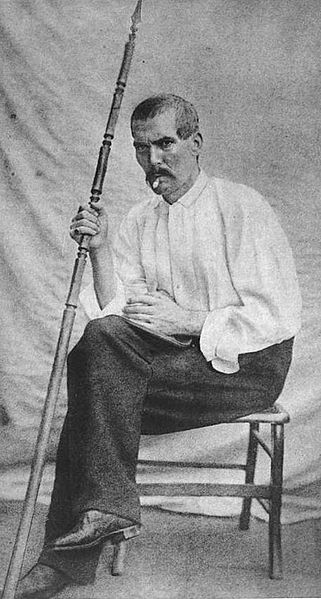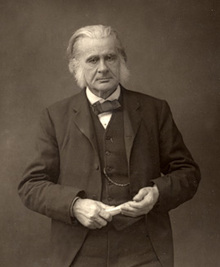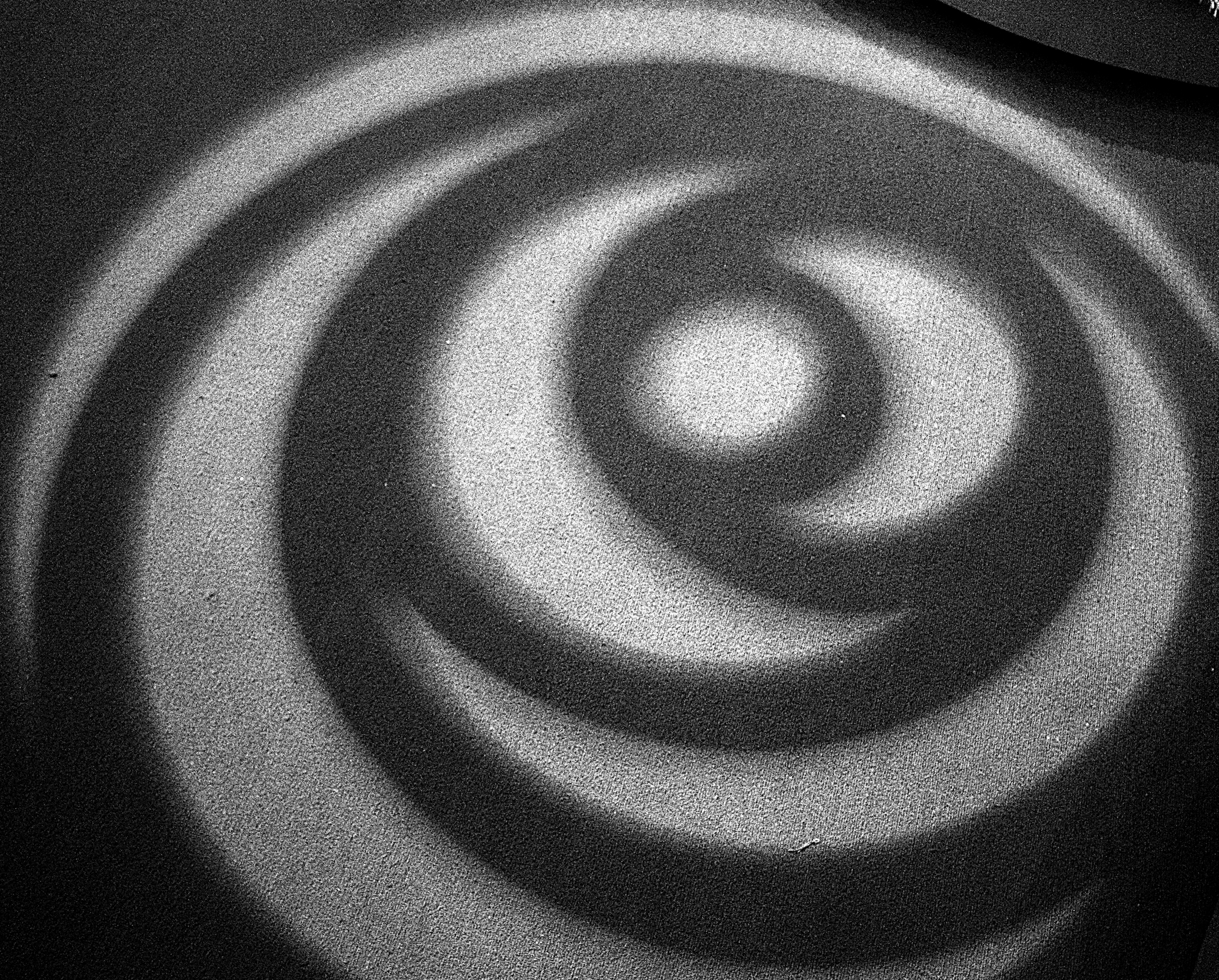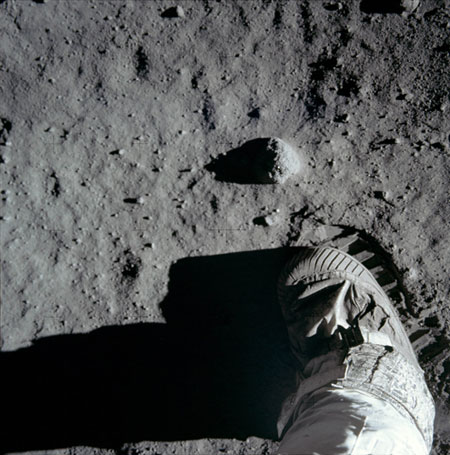A very striking “MSN must see” picture from July that of a lavender praying mantis camouflaged on a lavender orchid from the Borneo rain forest of Malaysia by Thomas Marent of Minden Pictures/Solent News and Photo Agency. You might be tempted to label this as “lavender death,” for such it would be for any poor, unwitting insect victim. But not too fast. When I was in graduate school, I took a wonderful course in the Neurobiology of Behavior given by the late great Thomas Eisner (1929-2011), Jacob Gould Schurman Professor of Chemical Ecology at Cornell University. Eisner gave brilliant lectures in which he pointed out that the color wheel of insects is quite different than our red-green-blue wheel. They don’t see red, but they do see much more in the violet and ultraviolet. Flowers tend to provide nice clearly visible little landing pads for pollinating insects. So why has the praying mantis evolved the matching lavender camouflage? It is protective and meant to thwart mantis-eating birds. Oh, and beyond this little lesson in physiological optics, it is a beautiful photograph, albeit a bit scary!
Yearly Archives: 2013
Bruce Davidson – East 100th Street at the MFA
In the twentieth century, street photography came to be defined by pioneers in the genre like New York photographer Bruce Davidson (b. 1933). Davidson has been a photographer for Magnum since 1958 and he has produced several gritty and highly significant both photographically and socio-historically, photodocumentaries of the twentieth century. The Museum of Fine Arts in Boston recently acquired forty-three prints from his defining photoessay, “East 100th Street,” originally exhibited at the Metropolitan Museum of Art in New York City in 1970.
These photographs capture life in what was characterized as one of the “worst neighborhoods” in NYC in the 1950’s. Davidson began this large format project in 1967, returning day after day to the one block area of East 100th Street between First and Second Avenue in Manhattan’s East Harlem. Early on in the project Davidson got the inevitable question from a woman on the street: “What are you doing here?” Davidson answered “I am taking pictures of the ghetto…” This he relates was followed by an awkward silence until the woman responded: “Well, what you call a ghetto, I call my home.”
And this is the very point of true street photography, isn’t it? Davidson’s images epitomize the the media of fine silver gelatin printing. He is a master. But more importantly as you slowly walk around the intimate gallery in which the MFA has displayed them, your can not help but smile repeatedly. These are people whose essential humanity rises above poverty and adversity. Their nobility is in the gestures, a hand touch here, a couple hugging or dancing in front of a jukebox, a mother and infant child, or a strong muscular man holding a little baby on his shoulders. This was the meaning of East 100th Street.
The exhibit runs through September 8 at the MFA.
Festival of Colors
My read of “Pictures of the Week” yesterday was totally delightful. Maybe it’s the glory of summer, but there were more than the one or two that really caught my eye this week. This image from the “Festival of Colors” in Saint Petersburg, Russia was taken by Dmitry Lovetsky of the AP on July 13th and is, I think just glorious! Isn’t it refreshing to just see young people just having fun? And of course, there is that je ne sais quoi Age of Aquarius quality for my generation! 8<}
Happily, the man was not eaten by killer whales
Yesterday, I was reading my news feed on Facebook and saw a video of a man on a beach being attacked and, sadly, eaten by orca, aka killer, whales. My immediate comment was “OMG!” However, then I got to thinking. Is this real?
Over the years I have read conflicting reports as to whether or not killer whales will actually attack humans in the wild. I emphasize the term wild since we know of the recent tragic death of a trainer at Sea World, and there is a controversy now about whether these beautiful giant creatures should really be confined to performing circus acts for people in confined aquaria. What always haunts me is Herbert George Ponting’s description of orcas trying to tip him into the water, while he was photographing on an ice flow in the Antarctic.
The video in question was not amusing. It purports to show a fellow human being’s untimely and terrible death. The good news it is a fraud. Cleverly created (falling under the current definition of Photoshopped, I guess), it is actually advertising footage for “La Sirena,” a retail chain in the Dominican Republic. La Sirena has an advertising character for it’s back to school promotion called “The Lucky Pencil,” and the footage ends with the words: “No todos los lapices dan suerte solo el lapiz la suerte de La Sirena” (Not all pencils give you luck, just the pencil “La Suerte” from la Sirena).
Beating the heat
The weather has been sizzling in the United States. I heard on the news tonight that 100 million Americans are in a heat wave. In Massachusetts we have had seven straight days of 90 plus (Fahrenheit) temperatures and are waiting, as I write, for the weather to break, which will almost certainly be heralded in by severe thunderstorms.
Of course, this is nothing in comparison to what readers in Nevada and Arizona have been experiencing. I’m worried about these people, since some articles would suggest that at around 131 deg. F the human body can no longer regulate its temperature. This, BTW, is not a good thing!
Anyway in the spirit of thinking and being cool, I found an interesting posting on NBC News’ Photoblog that shows images of people cooling off from summer’s heat fifty years and more ago and today. There are some great commonalities: children playing in sprinklers or fire hoses, stripping to the barest minimum (legally allowed) on busy city thoroughfares, and eating iced cream.
As for me, on Saturday, we went to Boston’s Museum of Fina Arts. I took lots of photographs, many that I am quite happy with, but cannot share them because of copyright/distribution restrictions. There was a marvelous exhibit of “Samurai Armor“ and another called “Hippy Chic” highlighting clothing from the sixties and seventies. I will share this one picture that shows the patterns of a disco light on the floor. Perhaps if all this heat continues we can hypnotize ourselves into thinking cool.
First footstep on the moon
The twentieth century had its fair share of visionary and great men and women – people who pushed the out envelope. July 20, 1969, forty-four years ago yesterday, Neil Armstrong takes his first step on the moon.
Beth Yarnelle Edwards’ Suburban Dreams
A reader sent me a link to a “The Slate” review of Beth Yarnelle Edwards’ portfolio “Suburban Dreams.” Actually, I recommend that you visit her website, as well, since there are lots more images than in “The Slate” article. Well, I have to say that this work is fascinating. The term “Suburban Dreams” immediately conjures up two mental images: the first is the movie “The Stepford Wives,” and the second is a quote that rings in my head from Sylvia Plath’s “The Bell Jar.” I am shocked to find that at some point I disposed of my copy. Thank, God, for the internet!
“They had a big, rambling house up the street from us, set behind a morbid facade of pine trees, and surrounded by scooters, tricycles, doll carriages, toy fire trucks, baseball bats, badminton nets, croquet wickets, hamster cages and cockerspaniel puppies – the whole sprawling paraphernalia of suburban childhood.”
Edwards’ goal was to create pseudo candid images. She observes people that she knows in their homes and other spaces, watches their lives, and when a moment or expression grabs her, she asks them to freeze. The effect is vivid; the subjects seem almost manikin props or people caught like deer in the headlights. The pictures immediately remind me of the work of Joel Myerowitz, whose posed photographs often look like candids. In particular there is “An Afternoon on the Beach, 1983,” a seemingly innocuous image until you look closely and realize that the same people appear several times in the image.
Consider Ms. Edwards’ image “Lorraine.” What are we to make of this? It seems more than a picture of a woman on a bed. There is a story. We see the crucifixes on the wall, the two telephones on the nightstand, the empty bed and the sad look of the woman on the bed. Is she waiting for someone? Is she worried? Is someone gone or worse passed on? There is huge pathos here, all captured in a simple “image.”
If you go to her HOLLAND Portfolio and then look at image 5 “Josien.” Again this seems very innocuous. But you wonder what is the content of the letter? I made the immediate association, maybe it’s the Holland aspect of the portfolio, with Jan Vermeer’s “The Love Letter, 1666.”
There is also the wonderful picture (number 3 in the Holland Portfolio) of little Friedo racing down a long white hallway on a scooter. This is one of those great recurrent mythic themes, the long passageway of birth, moving towards the light, or perhaps it is the rebirth that some primitive cultures create as a rite of liminal passage, It shows the great joy of youthful motion and is symbolic as much as it is literal.
I have spent a lot of time studying and restudying Beth Yarnelle Edwards’ photographs. Perhaps this is the greatest compliment that I can pay her. They are fascinating and beautiful. And I think that they teach us that complaining that you have nothing to photograph is really only an admission of lack of imagination. Ms. Edwards has done a wonderful job of weaving complex stories out of seemingly mundane situations.
The closing of the the Indian telegraph – Ghandi’s internet
We recently discussed how the telegraph network really represented the world’s first internet, allowing rapid worldwide communication and the transfer of images. This past Tuesday marked a critical milestone, the closing of the Indian Telegraph Service after 153 years in operation. More profoundly, it was the last major telegraph system in the world to shut its doors, making its silencing truly the end of a world era. This service has been referred to as “Ghandi’s email or internet.” It was the pulpit from which he broadcast to the world the case for Indian independence from Great Britain. At its peak in 1985 the service sent 600,000 telegrams a day across India. It had 45,000 telegraph offices. At the time of its closing the message volume had dwindled to a mere 5,000 a day and the number of offices to seventy-five.
Still we may reflect on the way in which technologies evolve, reach their zenith, and then decline only to be consumed and replaced by something new and better. There are the long-lived, truly world-defining technologies like the telegraph, the telephone, and the internet, and there are transitional technologies like the eight track tape and the analogue cell phone that are here today and rapidly evolve to something better.
Of course, the word now is “rapidly.” Technology changes our lives so quickly today that we are continuously in danger of becoming technical dinosaurs and the subject of ridicule by our children – the very children that must, in the course of time, truly inherit the Earth.
The seduction of the nineteenth century

Figure 1 – Photograph of the great British polyglot, explorer, and Arabist, Sir Richard F. Burton, who said: “Starting in a hollowed log of wood — some thousand miles up a river, with an infinitesimal prospect of returning! I ask myself ‘Why?’ and the only echo is ‘damned fool!… the Devil drives’,” from Wikimedia Commons and in the public domain.
We have discussed the early years of photography enough times now: the photographers, their portfolios, the innovations, and the ways in which they changed the world that one cannot help but notice that there is a certain appeal, a particular seduction, to the nineteenth century. What is this? Is it justified?
From 1978 – 1981, I had the privilege of being trained by one of the great modern biophysicists, Michael Edidin, at the Johns Hopkins University. From Michael I learned many important lessons: the proper pronounciation of the word “dissection,” the perfection of scientific reductionism, the quest for passion in science, and not to take myself too seriously. Michael and I share many common interests and have been lifelong friends. Not the least of these interests, lay in an understanding that when you needed to abstract yourself from a scientific problem, when you needed to divert your mind so that you could focus, then the best way was to retreat to The Eisenhower Library and bathe yourself in the light of the nineteenth century.
Naysayers will laugh at this love of that century. They will point to the tragedy of slavery in the nineteenth century, of crushing poverty, child labor, and to what was in essence the bondage of women. You have only to read “Uncle Tom’s Cabin,” “Oliver Twist,” “David Copperfield,” and “Tess of the d’Ubervilles” or “Anna Karenina,” to know of these tragedies and to recognize the fact that nineteenth century intellectuals and the middle class were concerned and troubled by them. For us, in our time, the tragedy is not what happened a century and a half ago, but what happens today. The mark of Cain that we bear is twenty-first century slavery, modern poverty, present day child labor, and the current bondage of women. The true tragedy lies not in the terrible brutal slaughter of the American Civil War but that we have done it again and again in the intervening 150 years. Genocide is not a bad memory but a modern day reality.

Figure 2 – Photograph of Sir Thomas H. Huxley , who said: “Sit down before fact as a little child, be prepared to give up every preconceived notion… or you shall learn nothing.” Photograph by W & D Downey, c 1888-1890, from the Wikimedia Commons and in the public domain.
Still we may ask: what is this “retreat into the nineteenth century?” In science and the intellectual realm the nineteenth century was the time of the great polymaths and generalists. Through intense mental labor a man could become expert in a broad science like physics and biology as opposed to being, as we are today in science, so specialized that we become myopic in our understanding. It was the time of great all-encompassing and synthetic science. A man like Darwin could travel the world, take it all in, and understand. The nineteenth century was crowded with such minds, minds working in laboratories, toiling in libraries, exploring the unknown world, and innovating in industry. Morse dreamed of instantaneous communication across and between continents. In our internet we are the heirs of Morse’s dream. Daguerre and Niépce dreamed of capturing light on a metal plate. Today we may still marvel at their faces captured in silver. They dreamed so many dreams that are today reality. And I think significantly that they were ultimately not fearful men and women. They were brave or secure enough to shatter forever the religious dogmas that had enslaved humanity for two millennia.
We “retreat into the nineteenth century,” taking a few moments to reflect on how they worked and the clarity of their vision. Then we return to the accelerated pace of our own world, hell bent to catch the singularity. Thus, renewed we may once more dream and create as they did.



